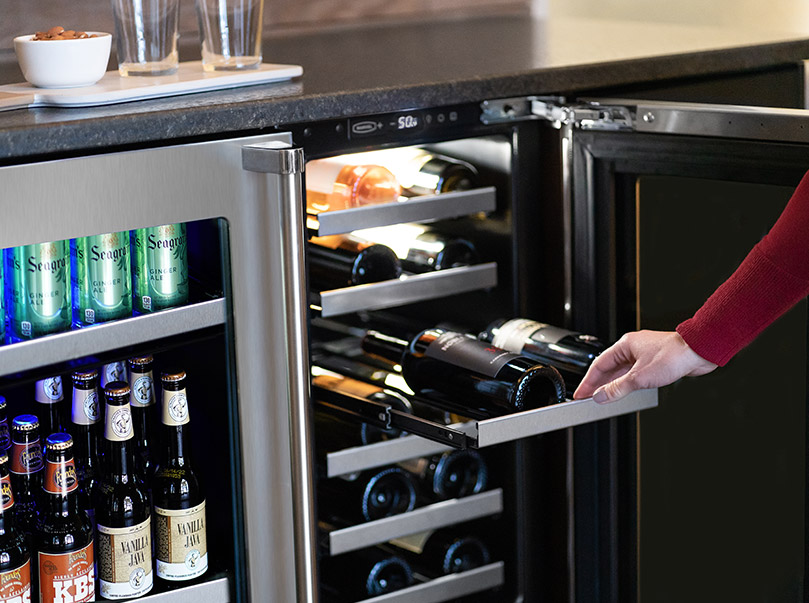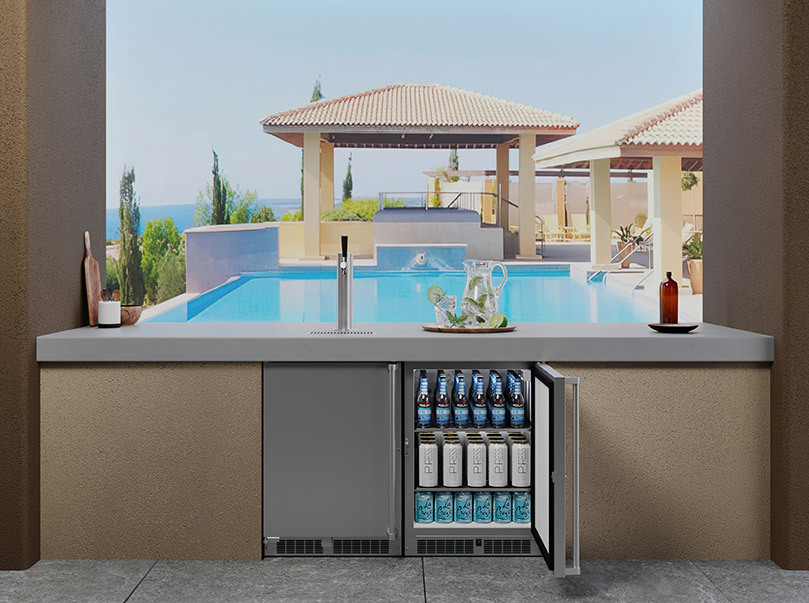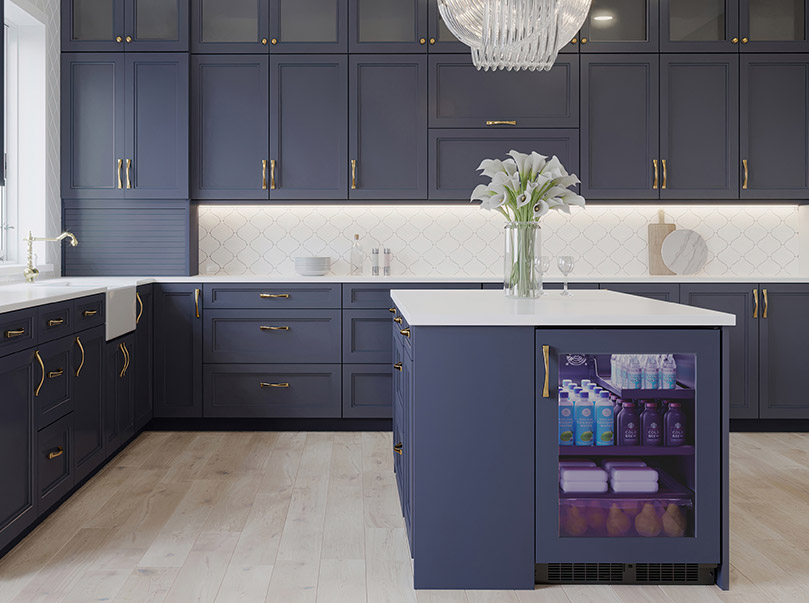The following is an excerpt from our archives and a historical look at our company before it became Marvel Refrigeration. This is the story of Ranney Refrigerator Company.
The Ranney Refrigerator Company, founded by Frederick E. Ranney, was originally incorporated and started in business in Greenville, Michigan, at its present location in 1892. For over a half century the company has grown through knowledge and experience gained and imparted from father to sons…three generations of planning and producing better refrigerators.
Prior to 1930, the company was primarily engaged in the manufacture of ice refrigerators sold nationally through furniture and hardware outlets. However, both wood and metal cabinets were produced for several electric refrigerator manufacturers during that period.

During the 1930s, the company manufactured household electric refrigerators on contract, including such names as Westinghouse, Universal Cooler and Zenith. In addition, a line of “air-conditioned” ice refrigerators was marketed nationally through the ice industry with the company’s own sales force. These ice refrigerators bore the trade name “ECONOM-ICER”.
Pearl Harbor found the Ranney Refrigerator Company prepared and ready to serve in the National Defense…Designing and manufacturing accessories for 40 mm Bofors Automatic Cannon; accessories for 20 mm Oerliken Automatic Cannon; propelling charge retainers for 75 mm and 105 mm artillery ammunition; parts for parachute flares and various kinds of containers and parts for Army Ordnance and Naval Ordnance, the Quartermaster Corps and Signal Corps.

The company continued in this manner throughout the war, maintaining a fine defense production record; at one time producing over 30 different products, all on a subcontract basis, for over twenty different customers including such companies as General Motors Corporation, Hudson Motor Car Company, Liquid Carbonic Corporation, American Oerliken Gazda, Rex Manufacturing Company, Fruehauf Trailer Corporation, Chrysler Corporation and others.
When hostilities ended, normal “private label” electric refrigerator production was resumed under such brand names as COPELAND, WORTHINGTON, CO-OP, MONITOR, L & H, ALDENS, ARMAID, SUPRE-MACY, BELKNAP, GILSON and REMA.
Navel Ordnance Development Award
The Ranney Refrigerator Company was cited by the United States Navy with the “Naval Ordnance Development Award” for outstanding performance in connection with the research and development of the 20 mm Sight, Mark 5, Mod O, and the 20 mm Twin Gun Mount, Mark 24, Mod 5. This distinguished service citation was made possible through the fine spirit of cooperation and diligent effort on the part of all employees.
Company Facilities: Engineering Department

The Ranney Refrigerator Company maintained a complete Engineering Department. This department designed, styled and engineered complete refrigerators to the customer specifications. In addition, this department operated a Product Development Laboratory for the development of new products through testing and analysis of experimental models. The facilities of the Engineering Department were available to customers requiring products other than refrigerators as were all the other company facilities.

Press Room

The Sheet Metal Department Press Room was well equipped to do light and medium stampings. Monorail steel handling equipment serviced the full Press Room width and expedited efficient line production from the steel storage bays through square and rotary shears direct to the bank of presses. Press Room facilities, in addition to standard metal working equipment, included a 175-ton capacity Thunder Bay Press, a 170-ton capacity Verson Press Brake, and specialized equipment including a Tishkin 14 Roll, Roll Forming Mill and a Struthers-Wells high speed Tangent Bender.
Associated with the Press Room, the company maintained a small Tool & Die Department to make small dies, jigs and fixtures and, for tool and tie maintenance.

Metal Fabrication and Finishing

The Metal Fabrication and Finishing Department was supplied from the Press Room and parts storage areas by both power and gravity conveyor systems. Department facilities included arc, gas and spot welding equipment. Skilled personnel operated traveling overhead gun welders, fixed pedestal welder stations, and specialized expansion gun welding fixtures for both line production and job lot application. This department also included complete facilities for metal finishing, grinding and buffing.

Paint Department

The Paint Department was laid out for hi-bake Dulux finishing. An overhead chain conveyor system carried parts through a six stage Bonderite treatment, dry off, prime spray, prime bake, finish spray and finish bake. The conveyor system then delivered finished parts to an inspection station at the head of the assembly lines.

Paint Department equipment included two 20′ DeVilbiss Spray Booths and both gas and oil fired Drying Ovens complete with all safety devices.

Assembly

The entire second floor of the plant was devoted to assembly operations. Straight line production methods were utilized throughout with feeder lines both powered and gravity conveyed. The refrigerators move down motorized assembly lines through the specialized charging manifolds and on to the refrigerator constant temperature testing room. Here each refrigerator was individually tested for a minimum of three hours. From the constant temperature testing room, refrigerators were returned to the main production line for final assembly inspection and through the Packing Department for crating. Crated refrigerators were then conveyed to the warehouse storage areas.
The entire assembly line was easily adaptable to job requirements. Ample assembly floor area and flexibility of operation stations make possible a daily production of up to 400 complete units.








